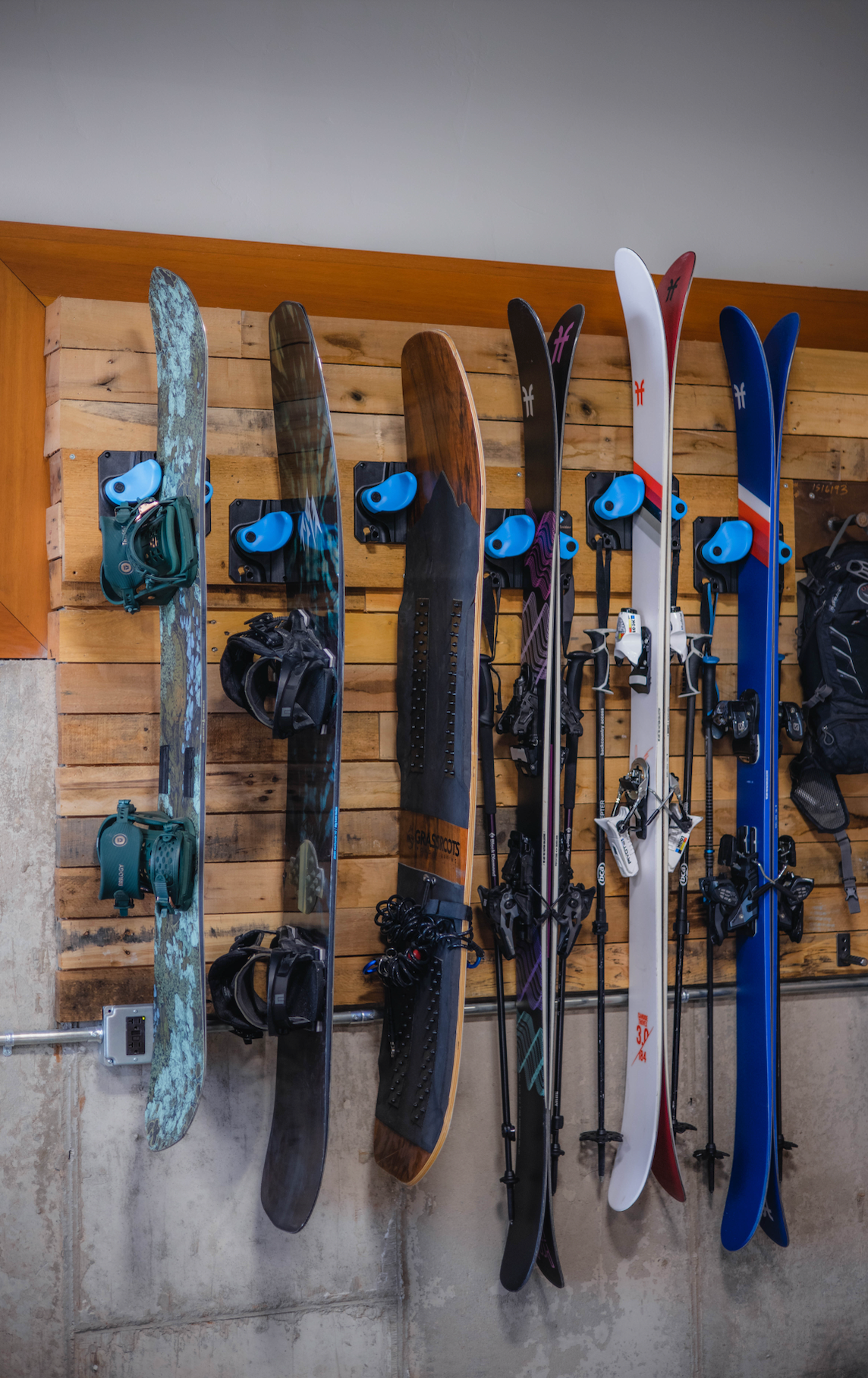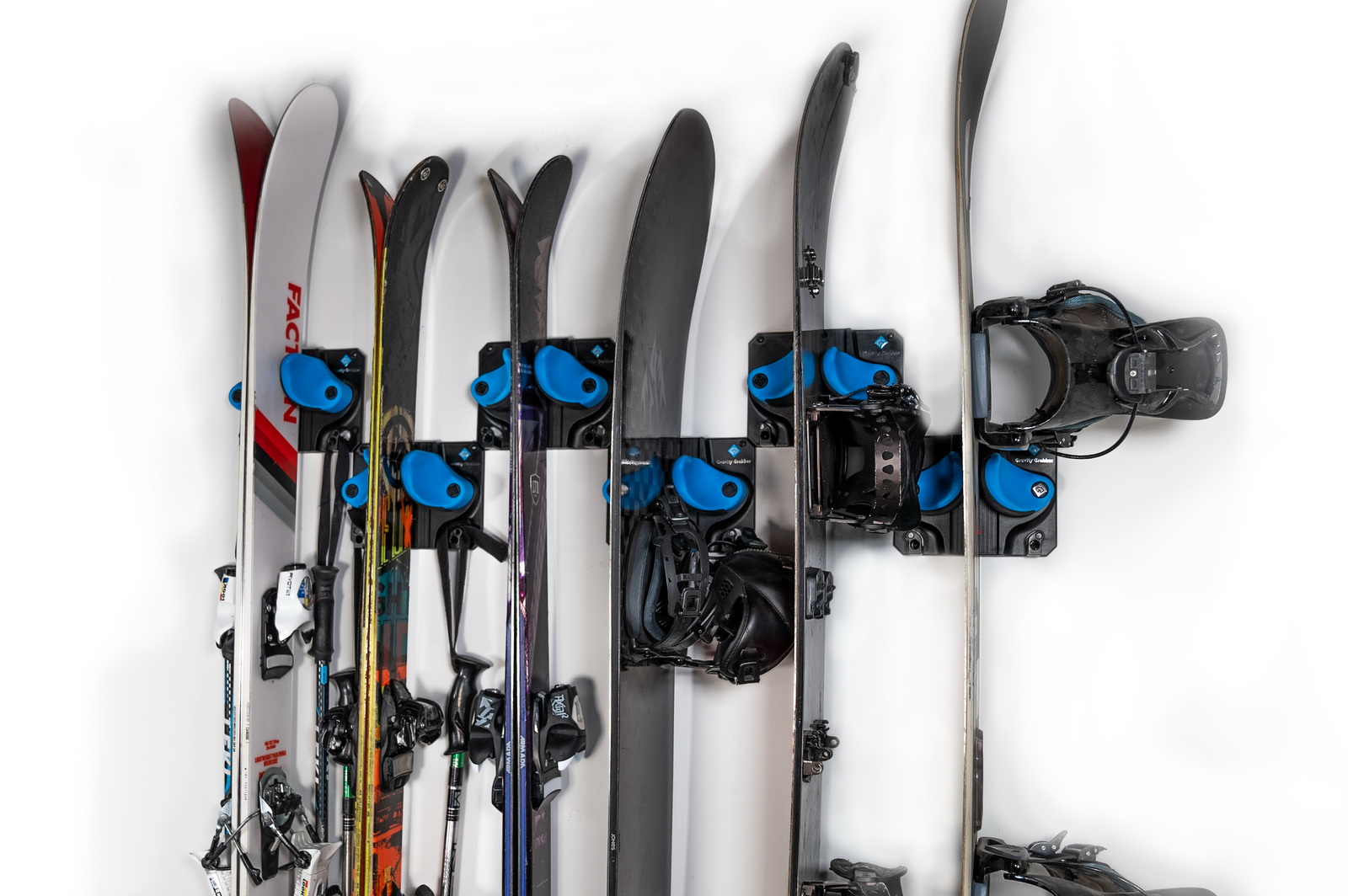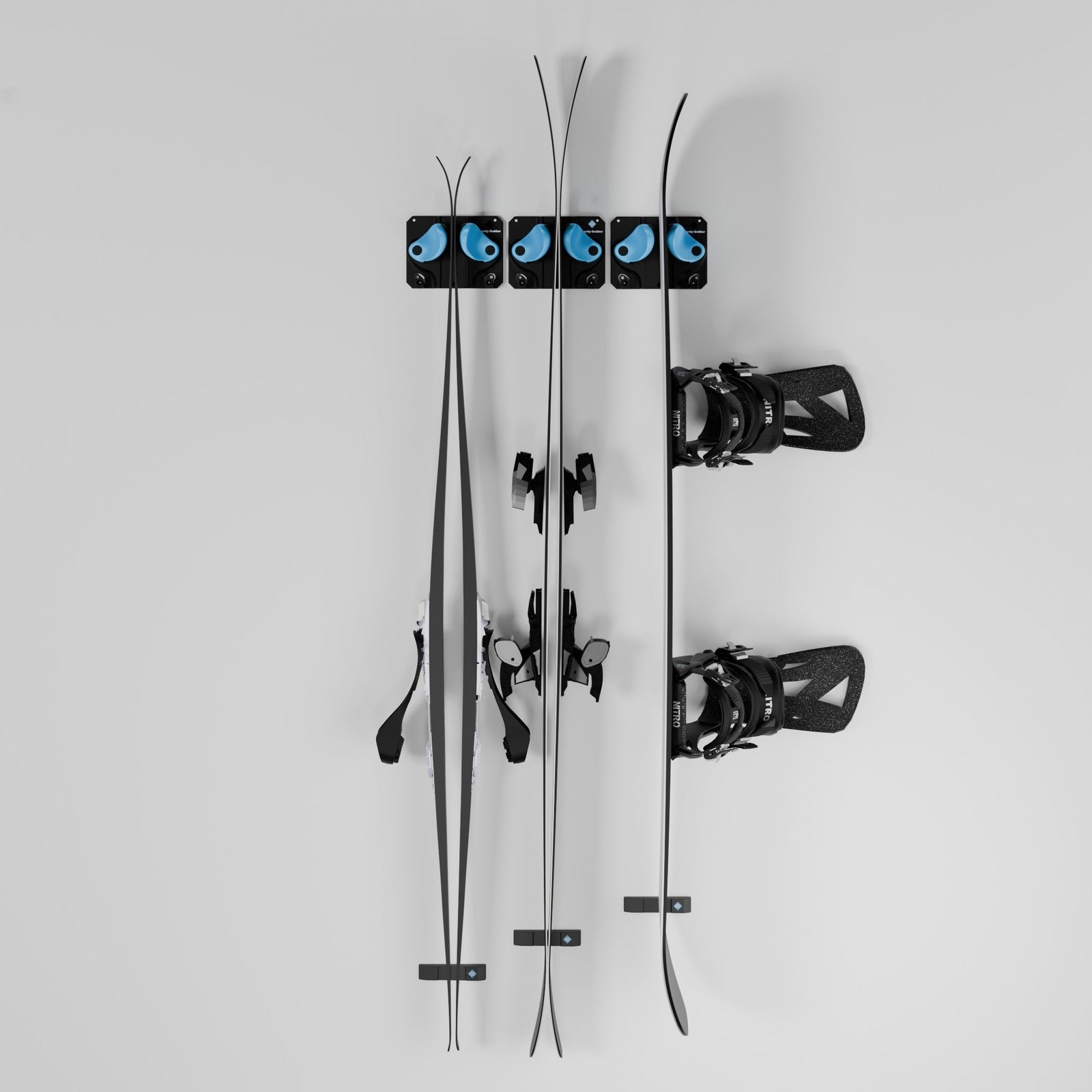Why Garage Ski Storage Matters
The garage is the default home for most ski gear, but it’s not always the best environment. Between cars, tools, and sports equipment, skis often get shoved into corners or leaned against walls. The problem? Garages are notorious for being damp, cluttered, and not built with delicate gear in mind.
Without proper garage ski storage, skis can warp, rust, or get scratched long before you head back to the mountains. Smart storage transforms the garage from a chaotic pile of gear into a functional space where everything is safe, easy to find, and ready to go.
The Risks of Poor Garage Ski Storage
Improper ski storage in garages creates a handful of predictable issues:
-
Moisture Damage: Garages collect snowmelt from cars and humidity from outside. Skis stored on the ground are exposed to water, leading to rust.
-
Warping: Leaning skis at odd angles for weeks can bend the camber or rocker profile.
-
Scratches and Chips: Crowded corners mean skis bang against bikes, shovels, and other gear.
-
Clutter: Without a system, skis become part of the garage chaos, adding frustration every time you pack for the slopes.
In other words, the garage can be both a blessing and a curse—it has space, but only if that space is used wisely.
Smart Garage Ski Storage Ideas
1. Wall-Mounted Racks
Vertical wall racks or grabber-style systems are the most effective way to keep skis safe and organized in the garage. They free up floor space, protect edges from moisture, and make gear easy to access.
2. Freestanding Floor Racks
If wall mounting isn’t possible, freestanding racks can hold multiple pairs upright. Just be mindful—they take up more space and don’t always separate skis fully, which can still risk scratches.
3. Ceiling Storage
Overhead systems keep skis out of the way, but they can be inconvenient for everyday use. These are better for off-season storage rather than mid-winter access.
4. Dedicated Gear Zones
Even without racks, dedicating one section of the garage to ski equipment makes a difference. Use mats to catch snowmelt and avoid mixing skis with tools or lawn gear.
5. Moisture Control
Garages fluctuate in temperature and humidity. Adding a dehumidifier, using moisture-absorbing packets, or simply elevating skis off the ground helps preserve edges and bases.
How to Choose the Best Garage Ski Storage for You
The “right” solution depends on your garage setup and how often you ski:
-
Frequent Skiers: You need quick, grab-and-go access. Wall-mounted solutions are ideal.
-
Families: Multiple pairs of skis mean organization matters. Systems that separate and protect gear reduce morning chaos.
-
Occasional Skiers: A simple wall mount or corner rack might be enough, as long as it keeps skis off the floor.
-
Small Garages: Prioritize vertical storage that uses wall height instead of floor space.
Gravity Grabber: An Ideal Garage Ski Storage Solution
Among the many garage ski storage options, the Gravity Grabber stands out because it addresses the real-world problems skiers face in garages.
-
Wall-Mounted Efficiency: Keeps skis vertical and off damp floors.
-
Protective Grip: Soft arms secure skis without scratching or warping them.
-
Versatility: Works not just for skis, but also snowboards, poles, paddles, and even tools.
-
Space-Saving: Compact design makes it easy to fit into garages of all sizes.
-
Quick Access: Gear slides in and out in seconds—ideal for ski mornings.
Instead of improvising with corners or makeshift racks, the Gravity Grabber creates a purpose-built gear zone in the garage, turning storage into protection.
Transforming Garage Chaos into Ski-Ready Order
A garage can either be the enemy of ski gear or its best protector. The difference lies in how you store your skis. By choosing wall-mounted racks, separating gear, and controlling moisture, you can keep skis sharp, dry, and ready for every adventure.
The Gravity Grabber makes this simple—transforming garages into organized, ski-ready spaces that protect your investment and simplify your lifestyle.
Because the best ski days don’t start in the mountains—they start with how you store your gear at home.




